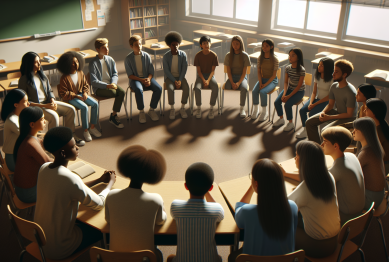In the fast-paced world of social media advertising, capturing attention is more than just good design—it’s psychology. Color plays a pivotal role in influencing user emotions, decisions, and behaviors. The psychology of colors in social media ads is no longer a subtle tactic; it’s a strategic tool that brands increasingly leverage to enhance engagement, boost click-through rates, and drive conversions.

Why Color Psychology Matters in Social Media Ads
Humans are visual creatures. Studies suggest that people make a subconscious judgment about a product within 90 seconds—and up to 90% of that judgment is based on color alone. In the context of social media, where attention spans are notoriously short, your choice of color could make or break your campaign.
Brands use specific colors to trigger emotions and perceptions:
- Red creates urgency and excitement. Think clearance sales or breaking news.
- Blue conveys trust and stability—ideal for banks or tech brands.
- Yellow grabs attention and communicates optimism.
- Green represents health, wellness, and nature.
- Black suggests luxury and sophistication.
- Purple signals creativity and imagination.
Understanding how your audience reacts to these colors can help your ad content resonate more deeply, encouraging users to stop scrolling and take action.
How the Psychology of Colors Impacts Engagement and Conversions
The psychology of colors in social media ads directly affects performance metrics. For instance:
- A Call-to-Action (CTA) button in red or orange can outperform neutral tones due to increased visibility and urgency.
- Using contrasting colors between text and background improves readability, which boosts engagement.
- Platforms like Instagram and Pinterest, which are highly visual, benefit significantly from color-optimized content that stands out in crowded feeds.
Real-World Example of Color Psychology in Social Media Ads
HubSpot found that red buttons outperformed green ones by 21% in a CTA test. Similarly, Buffer reported a 45% increase in Twitter engagement when switching from blue to orange-themed image posts.
Understanding Audience Color Preferences in Social Media Marketing
Your target audience’s age, gender, and cultural background can influence how they perceive color:
- Women tend to prefer purple, blue, and green.
- Men often favor blue, green, and black.
- Younger users respond well to vibrant, high-contrast colors.
- Older demographics may prefer softer, more muted palettes.
Cultural significance also plays a role. While white may represent purity in the West, it can symbolize mourning in parts of Asia. Tailoring your color choices based on audience demographics ensures your message hits the right emotional notes.
Best Practices for Applying the Psychology of Colors in Social Media Ads
To effectively use the psychology of colors in social media ads, follow these best practices:
- Maintain Brand Consistency: Stay true to your brand colors to reinforce recognition.
- Use High Contrast: Ensure CTAs and headlines are easy to read.
- Test and Analyze: A/B test different color schemes to see which performs better.
- Optimize for Platform Aesthetics: What works on Facebook might not suit TikTok.
- Avoid Overuse: Too many bold colors can overwhelm and confuse viewers.
Color Tools to Support Your Social Media Ad Strategy
Several tools can assist in perfecting your color strategy:
- Canva Color Wheel: For color harmony and contrast.
- Coolors.co: Quickly generate professional palettes.
- Adobe Color: Advanced color theory tool with trend tracking.
Color Psychology Tips for Different Social Media Platforms
Different social media platforms come with distinct visual cultures and user behaviors. Understanding the color psychology unique to each platform can give your ads an extra advantage:
Instagram and Color Psychology for Visual Branding
Instagram thrives on high aesthetic value. Vibrant, saturated colors often do well, but the overall harmony of the image matters most. Branded filters or cohesive color schemes can elevate your visual identity and improve recall.
Facebook Ad Performance and Color Use
Facebook users often respond to clear, bold colors that stand out among personal content. Contrasting buttons and well-placed blue tones can align with the platform’s native look while still drawing attention.
TikTok Color Psychology for Youth Engagement
TikTok is fast, playful, and spontaneous. Bright neons and high-contrast designs can cut through the noise, especially when combined with bold text overlays or motion graphics that amplify the color’s impact.
LinkedIn and Professional Color Strategy
Professionalism is key. Cool tones like blue and gray often perform better here, as they communicate trust, credibility, and calmness—perfect for B2B messaging or service-oriented brands.
Final Thoughts
The psychology of colors in social media ads is a powerful, often underutilized strategy that can dramatically influence campaign success. By understanding how color affects perception and emotion—and tailoring your choices to your target audience—you can create visually compelling ads that stand out, engage, and convert. In the crowded landscape of social media, the right shade could be your secret weapon.weapon.
References
- Cherry, Kendra. “Color Psychology: Does It Affect How You Feel?” Verywell Mind, 2023.
- HubSpot. “A/B Testing: Red vs. Green Buttons”, 2023.
- Buffer. “How Colors Affect Conversions”, 2023.
- Canva. “How to Use Color Psychology in Marketing”, 2023.
- Adobe. “Adobe Color Trends and Tools”, 2023.









